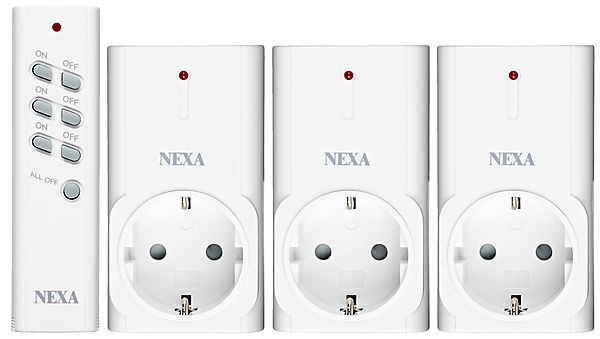There are several projects out there designed to create an IoT button:
- You press a button.
- Magic happens, and stuff runs on your computer, or is otherwise triggered remotely.
I made my own internet-button, an esp8266-based alarm-button, and recently I've wanted to have a few more dotted around our flat. To recap, the basic way these things work is that you have a device with a button on it.
Once deployed you would press the button, your device wakes up, connects to your WiFi and sends a "message". That message then goes on to trigger some kind of defined action. In my case my button would mute any existing audio-playback, then trigger the launch of an "alarm.mp3" file. In short - if somebody presses the button I would notice.
I wanted a few more doing slightly more complex things in the flat, such as triggering lights and various programs. Unfortunately these buttons are actually relatively heavy-weight, largely because connecting to WiFi demands a reasonable amount of power-draw. Even with deep-sleeping between invocations, driving such a device from battery-power means the life-span is not great. (In my case I cheat, my button is powered by a small phone-charger, which means power isn't a concern, but my "button" is hobbled.)
Ideally what everybody wants is security, simplicity, and availability. Running from batteries, avoiding the need to program WiFi credentials and having a decent form-factor makes an IoT button a lot simpler to sell - you don't need to do complicated setup, and things are nice and neat.
So I wondered is such an impossible dream actually possible, and it turns out that yes, such a device is trivial.
Instead of building WiFi into a bunch of buttons you could you build the smarts into one device, a receiver, connected to your PC via a USB cable - the buttons are very very simple, don't use WiFi, don't need to be programmed, and don't draw a lot of current. How? Radio.
There exist pre-packaged and simple radio-based buttons, such as this one:

You press a button and it broadcasts a simple message on 433Mhz. There exist very cheap and reliable 433Mhz recievers which you can connect to an arduino, or ESP8266-based device. Which means you have a different approach:
- You build a device based upon an Arduino/ESP8266/similar.
- It listens for 433Mhz transmissions, decodes the device ID.
- Once it finds something it recognizes it can write to STDOUT (more or less)
- The host system opens
/dev/ttyUSB0and reads the output- Which it can then use to trigger actions.
The net result is you can buy a bunch of buttons, for €5 each and add them to your system. The transmissions are easy to decode, and each button has a unique ID. You don't need to program them with your WiFi credentials, or set them up - except on the host - and because these devices don't do much, they just sleep waiting for a press, make a brief radio-transmission, then go back to sleep, their batteries can last for months.
So that's what I've done. I've written a simple program which decodes the trasmissions and posts to an MQ instance "button-press-a", "button-press-b", etc, and I can react to them uniquely. (In some cases the actions taken depend upon the time of day.)
No code to show here, because it depends upon the precise flavour of button(s) that you buy. But I had fun because some of the remote-controls around my house use the same frequency - and a lot of the cheap "remote-controlled power-switches" use this fequency too. If you transmit as well as receive you can have a decent amount of fun. :)
Of course radio is "broadcast", so somebody nearby could tell I've pressed a button, but as far as security goes there are no obvious IoT-snafus that I think I care about.
In my next post I might even talk about something more interesting - SMS-based things. In Europe (data)-roaming fees have recently been abolished, and anti-monopoly regulations make it "simple" to get your own SIMs made. This means you can buy a bunch of SIMS, stick them in your devices and get cheap data-transfer Europe-wide. There are obvious commercial aspects available if you go down this route, if you can accept the caveat that you need to add a SIM-card to each transmitter and each receiver. If you can a lot of things that become possible, especially when coupled with GPS. Not only do you gain the ability to send messages/events/data, but you can see where it came from, physically/geographically, and that is something that I think has a lot of interesting use-cases.
Tags: esp8266, iot 3 comments
